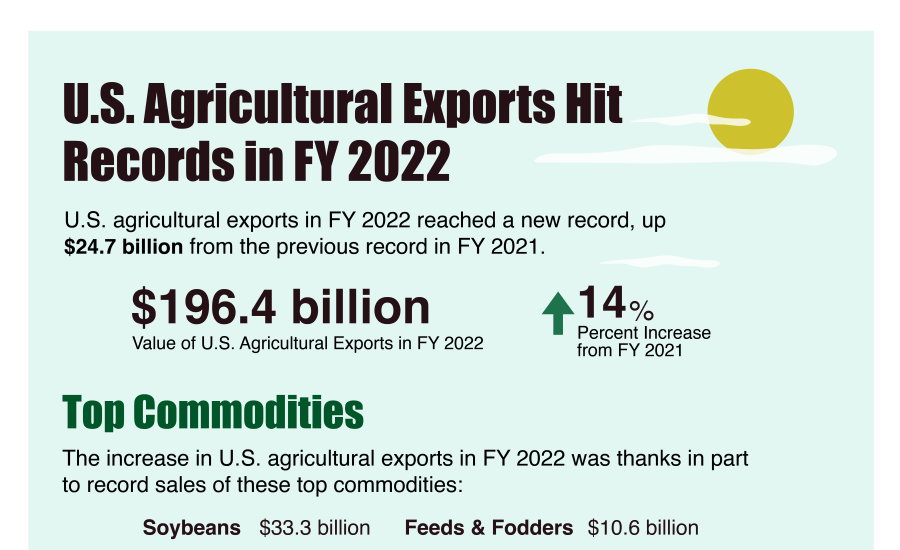Browse Data and Analysis
Filter
Search Data and Analysis
- 460 results found
- (-) Canada
- Clear all
FY2022 agricultural exports reach record levels.
In marketing year 2022/23, wheat production is forecast up more than 50 percent from the previous year on increased acreage and higher yields due to improved soil moisture. Wheat exports are forecast to increase year-over-year on larger domestic supplies. Crop 2022 will be the first sizable crop in four years to compete for rail services with other sectors throughout an entire marketing year. Non-durum and durum wheat are expected to be of high quality, resulting in lower feed-grade wheat supplies.
Canada continues to be the largest export market for U.S. consumer-oriented products. In 2021, U.S. consumer-oriented exports to Canada reached $18 billion, doubling the amount exported to the second largest market, Mexico.
FAS/Canada projects modest growth for milk and cheese production in 2023, as consumption remains stable, and the market is partially supplied by rising import volumes following implementation of Canada’s various trade agreements. Butter production is forecast to grow in 2023, as stocks remain low, depleted by sustained strong consumption.
In June 2022, Canada published final regulations on front-of-package nutrition labeling (FOPNL). The new regulatory requirements are complex, and the food industry has until January 1, 2026 to implement label changes and become compliant. Stakeholders are strongly encouraged to consult the variety of resources and information made available by Health Canada to assist with FOPNL implementation.
Further contraction in the Canadian herd is forecast in 2023 driven by lingering impacts from the 2021 drought. A smaller cow herd will result in a reduced calf crop and lower beef production compared to 2022.
FAS/Canada projects moderate growth in chicken meat production in 2023, following a challenging year in 2022 due to tight supplies of hatching eggs and day-old chicks, and increased avian influenza occurrence.
Canada’s Clean Fuel Regulation (CFR), Quebec's new low-carbon fuel regulation, and E15 in Ontario (in 2030) are expected to drive up ethanol demand in Canada. The CFR became law on July 6, 2022 and is designed to reduce greenhouse gas (GHG) emissions associated with transportation fuel.
The federal government opened consultations on two initiatives to advance the goal of zero plastic waste by 2030: on rules for recyclability and compostability labelling; and on establishing a federal plastics registry for producers of plastic...
Climate change, the environment, and increased participation of Indigenous Peoples, women and youth will feature alongside more traditional priorities like competitiveness, innovation and international trade in Canada’s future agricultural policy framework.
On July 26, 2022 the Canadian Food Inspection Agency (CFIA) opened a consultation on proposed guidance for registration requirements of gut modifier products under the animal feeds regulations. The consultation will remain open until September 19, 2022.
On July 20, 2022, Canada announced final regulations to amend the Food and Drug Regulations (FDR) to establish detailed conditions for the use of supplemental ingredients in food. The amendments will also establish additional requirements on the labelling of supplemented foods beyond the general requirements in the FDR for prepackaged foods.

